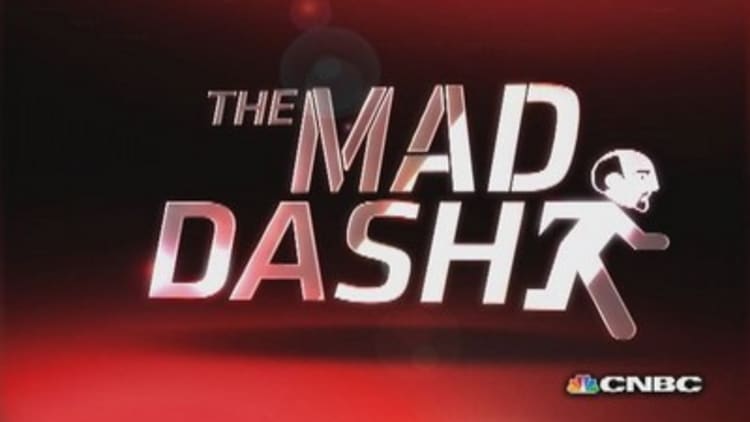Have U.S. consumers turned over a new leaf following the financial crisis, and learned to spend within their means?
Barclays is betting on it.
The bank, which on Monday initiated coverage on the domestic luxury sector, said it's bullish on brands such as Kate Spade, Ralph Lauren and Nordstrom, because they fit into the sweet spot of affordability and availability, but have upheld their premium positioning and kept their brand equity intact.
"Since 2008, there has been a noticeable shift in North America towards premium but accessibly priced luxury, as the spending habits of the domestic consumer have transitioned away from ultra-high-end purchasing," Barclays analyst Joan Payson said. "Making these products even more accessible has been the strategic rollout of off-price, both in the expansion of brand-operated outlets and high-end department stores expanding their own off-price formats."
(Read more: Middle class buying luxury again—but at a bargain)
Domestic luxury accessories brands price more than 90 percent of their goods at less than $1,000—a significant discount to global competitors, who offer less than 50 percent of their assortment for less than $1,000. Whereas Coach prices a number of its tote bags near $300, a Gucci tote can run closer to $2,000.
These accessible prices, paired with opportunities to expand abroad and grow their presence in both branded stores and online, resulted in Barclays predicting U.S. luxury companies will outperform the global luxury space from 2013 to 2016, posting 8 percent to 10 percent growth. It predicts the overall global space will grow 3 percent to 5 percent over the same period.
The global personal luxury goods market currently rings in at $285 billion, according to the report.
(Read more: Stocks signal drop in luxe spending)
"Compared to absolute luxury brands, U.S. brands have a substantially different consumer mix, which is heavily weighted towards American consumers and suggests an untapped opportunity to grow penetration of the traditional luxury consumer in Europe and Asia," Payson said.
Best, worst in class
Barclays named Kate Spade as its top pick within the sector, saying its share price does not yet reflect the potential of the newly focused monobrand company—formerly known as Fifth & Pacific—which recently sold off Lucky Brand and Juicy Couture.
(Read more: Coach hopes to shed mom 'baggage')
"We think the company can grow from a $1 billion brand to more than $4 billion longer term," Payson said.

Barclays has a 12-month price target of $50 on the company, which is currently trading near $40.
Opposing the Street's consensus, Barclays said it's underweight on industry standout Michael Kors, which has seen its shares rise about 65 percent on the year. Payson has placed a $85 12-month price target on the brand, which is currently trading near $96.
"The existing retail footprint is larger than that of Coach in North America and productivity is well above industry norms, suggesting maturity and potential for a near-term slowdown in North America," Payson said. "We also think broad domestic wholesale distribution is a longer-term risk to the brand."
Along with Kate Spade, Barclays is also "overweight" on Ralph Lauren, Tommy Hilfiger parent company PVH and Calvin Klein owner G-III Apparel Group. It rated Nordstrom, Coach and recently public accessories label Vince as "equal weight."
—By CNBC's Krystina Gustafson. Follow her on Twitter @KrystinaGustafs.


